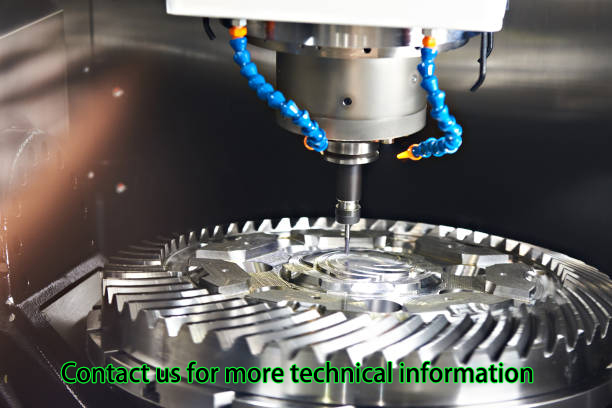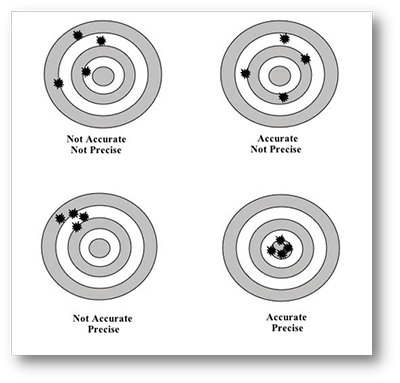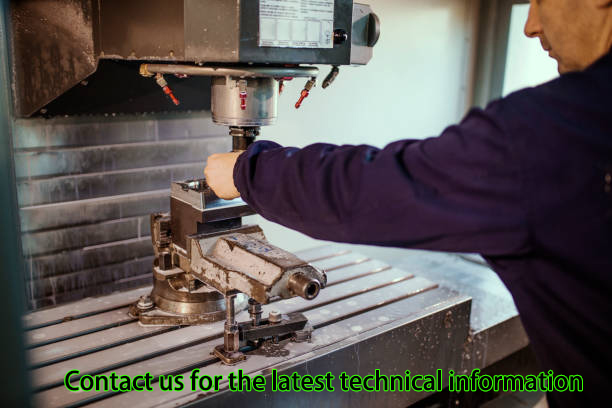Introduction
Machining processes are important in manufacturing components of fine tolerance since they involve material removal from a workpiece. They play a significant role in defining, manufacturing, and finishing the components produced in the industries.
Starting with some of the oldest techniques such as milling and turning and up to the modern methods such as EDM and even additive manufacturing each method is useful in a certain way. Knowledge of these processes is critical in the selection of the most appropriate technique depending on the material, problem difficulty, and accuracy requirements. In this article, we will discuss the most prevalent categories of machining processes and the uses of these processes in contemporary production.
What is Machining?
Machining is one of the manufacturing business processes that involves cutting away material from a workpiece to obtain a wanted profile. This is carried out by employing equipment such as lathes, mills, drills, such instruments that cut, grind, or shape the material accurately. It makes it possible to create elements with thin walls and, on the other hand, thick, robust ones, very often applied in automotive, aviation, and even medicos industries.
Machining is done on metals, plastics, and other materials and it is very important in the production of parts that cannot be produced by other methods. It often ends up using tools like cutting, grinding, or turning to eliminate material to create the component to the specific size, shape, and surface finish.
Turning, milling, and drilling are the common machining processes that are selected based on the targeted geometries of a particular part. These processes enable manufacturers to create everything from basic geometric shapes to designs of increased geometric complexity with great accuracy.
12 Machining Processes Explained
Machining is one of the most important activities within manufacturing since it involves shaping components from raw materials. Various kinds of machining are required for various applications based on the material type, part shape, and production volume. This article will provide information on twelve fundamental machining operations, their varieties, advantages, and uses.
Turning
Turning is a process through which the workpiece rotates while the cutting tool runs along the perimeter to cut off material. More often this is utilized for forming cylindrical workpieces. Depending on the angle of the tool and where it is held, different shapes are achievable within the program.
Common Types:
● CNC Turning: Turning to utilize computerized numerically controlled turning for accuracy.
● Live Tooling: This is suitable for turning and milling at the same time.
● Turret Lathes: These can be used to produce a high volume of complex shaped parts and components.
Key Benefits:
● This is suitable for round cylindrical jobs and designs that require a significant level of precision.
● High accuracy particularly for long straight parts.
● Economical for both low to high-volume production.
Common Uses:
● Shafts, Bushes, Bolts, and Pulleys.
Milling
Machining involves material cutting from a workpiece with the help of sharp tools and among them, Milling is a process in which a rotating cutter is used for cutting the material from the workpiece. The cutter translates and rotates along several directions to make flat or curved shapes or customized shapes. Milling machines are very flexible and one can get parts withcomplicated contour.
Common Types:
● Vertical Milling: The cutting tool by its motion is in a vertical plane.
● Horizontal Milling: The cutter moves horizontally and is most suited for larger parts of the material.
● CNC Milling: Automated operations and Computer-controlled milling machines.
Key Benefits:
● High suitability in making multiple shapes.
● Forces possible the machining of flat, angular, and curved surfaces.
● Suitable for small and big components.
Common Uses:
● Molds, dies automotive components, and fixtures.
Drilling
Drilling is one of the processes of making holes in a workpiece by use of a drill which is a rotating tool. It is one of the most frequently used operations in the practice of materials processing and it can be combined with other operations such as turning or milling.
Common Types:
● CNC Drilling: A higher level of accuracy in boring with the help of automatic devices.
● Deep Hole Drilling: Used for making deep and slender access holes.
● Gun Drilling: Designed specifically for making deep, straight, heavy-duty holes in heavy sections.
Key Benefits:
● Relatively faster and cheaper for making holes.
● Suitable for use with most types of stock.
● Excellent stability when aligning the hole and also in regards to the depth.
Common Uses:
● Can be used in the manufacture of engine blocks, aircraft, and structures among others.
Grinding
Grinding is the use of an abrasive wheel to employ the wheel’s fast-moving abrasive grains to progressively remove small amounts of stock – either to generate a smoother finish on a product or to provide it with accurate geometric dimensions. It is often applied in the finishing and generation of small clearances.
Common Types:
● Surface Grinding: How to level flat surfaces after flattening them by bringing them to a smooth level.
● Cylindrical Grinding: Fremont manufactures and distributes precision grinding machines for OD (outside diameter) cylindrical workpieces.
● Centerless Grinding: Grinding with no need for clamping of the workpiece.
Key Benefits:
● Perfect for projects that require smooth finishes and tight clearance with hard and brittle material.
● Suitable for use on high-strength materials or when machining difficult materials.
● The process is ideal for creating a very smooth skin on a part without changing the part’s dimensions.
Common Uses:
● Bearing, gears, cutting tools, and these fine parts.
Electric Discharge Machining (EDM)
EDM is an unconventional machining process that makes use of electrical discharge to remove material from the workpiece. It is very suitable for hard metals and complicated shapes and is preferred to many other processes that cannot deliver the output required.
Common Types:
● Wire EDM: Blanking or cutting fluids of thin wire shapes are used for intricate shapes.
● Sinker EDM: A shaped electrode is applied to cut deep or fine details.
● Small Hole EDM: Cost-effective solution for accurate hole-making to hard materials.
Key Benefits:
● Suitable for difficult materials as well as complex-shaped sections.
● Has high flexibility with the ability to create geometries of considerable complexity and density.
● No mechanical force is applied, thus reducing part distortion.
Common Uses:
● Molds die, aerospace parts, and tools.
Laser Cutting
Laser cutting employs a laser beam to soften or evaporate material off a piece of work. The process is controlled through Computer Numerical Control for better cutting to ensure it is suitable for high-accuracy parts.
Common Types:
● CO2 Laser Cutting: It involves cutting plastics, metal, and wood.
● Fiber Laser Cutting: Suits for cutting metal at higher speed effectively cutting on steel and other ferrous metals.
● Fiber Laser Engraving: Also can be used for engraving and for cutting on metals using a laser.
Key Benefits:
● The high degree of accuracy that dovetails with low scrap rates.
● Capable of cutting many types of material as well as metals and plastics.
● Sharp edges and reducing down on heat inexperienced areas.
Common Uses:
● Thin metal cutting, signage, prototyping, and precision metal parts.
Waterjet Cutting
Waterjet cutting is essentially a cutting technique that uses water at a high pressure, and sometimes with additives. Casting is good for materials that can react with heat since it does not produce heat distortion.
Common Types:
● Abrasive Waterjet Cutting: Employed to work on thicker materials such as metals and stone, they are.
● Pure Waterjet Cutting: For cutting inductive materials such as rubber or good crops for instance potatoes.
Key Benefits:
● The heat-affected zone is minimized, so distortion of the material is avoided.
● Can sever through different types of materials.
● Accurate and can work on very thick pieces of leather.
Common Uses:
● Aerospace components, stone cutting, and composites.
Surface Grinding
Specific to the binding process is that surface grinding is a kind of grinding process that concentrates on making the surface flat. It utilizes the abrasive wheel to cut through material and. shape or finish it to a specific level.
Common Types:
● Horizontal Surface Grinding: Used for grinding large-sized materials to be processed.
● Vertical Surface Grinding: Interested in finishing the smooth and flat surfaces of the product.
● Plunge Grinding: It is used for deep cutting of narrow areas.
Key Benefits:
● Super for final finishes and where close fits are required.
● Able to work on ferrous and nonferrous materials alike.
● Suitable for use when leveling and surface finish is desirable.
Common Uses:
● Accuracy parts, tool making, and level components.
Wire EDM
Wire EDM is the refined kind of EDM in which a thin wire is utilized to cut through the material. It is highly accurate and preferably suitable for generating intricate and fine components, particularly in rigid materials.
Common Types:
● Fine Wire EDM: Designed for finely detailed carving and for making relatively small incisions.
● Heavy Duty Wire EDM: Tough for use on thick materials.
Key Benefits:
● Where special dimensions and work details are required at a smaller scale, high precision is possible.
● An excellent choice for those geometries that require tight tolerances.
● Avoid any forms of mechanical forces on the part.
Common Uses:
● Molds, precise metalwork, and other small articles.
Casting
Casting is a process whereby a liquid material is placed or poured into a mold to the required shape. After cooling, the formation of a material in the required shape is completed. It is widely used for the molds that produce large and complicated shapes.
Common Types:
● Sand Casting: Sand molding is used in producing metal parts.
● Die Casting: A mold is filled with liquid metal being under high pressure.
● Investment Casting: Also called lost-wax casting, which is used when the need is for very accurate and highly finished parts.
Key Benefits:
● Most suitable for intricate and big products.
● Economical when used for mass production of the various parts required in a production line.
● Has the ability to create very detailed features.
Common Uses:
Car parts, and machinery parts for mounting applications
Stamping
Stamping is a cold working process done by using a die to impress, cut, or bend sheet metal. It is fast and efficient and is well applicable in cases of mass production.
Common Types:
● Progressive Stamping: Molds parts by the use of a sequence of dies that have a progressive nature.
● Deep Drawing: Applied for the production of the pieces with complex undercuts.
● Punching: A kind of stamping that makes holes in the sheet metal.
Key Benefits:
● High production rate, that is suitable for mass production.
● Specially useful for creating flat, and even parts of equal thickness.
● Minimal material waste.
Common Uses:
● Car body components, electrical boxes, and stove parts.
3D Printing
Selective laser sintering, or direct metal laser sintering, for instance, selectively fuses particles of material to create a part from a digital model. This technique is highly flexible and can make geometries that are hard to accomplish with conventional techniques.
Common Types:
● Fused Deposition Modeling (FDM): Constructs objects from thermoplastic materials in the form of filaments.
● Selective Laser Sintering (SLS): Portable and uses a laser to fuse powdered material.
● Stereolithography (SLA): It also utilizes UV light to solidify every layer of the liquid resin successively.
Key Benefits:
● Especially used in intricate and unique designs.
● Less material wastage, and short cycle time.
● The very little setup involved is good for the short runs.
Common Uses:
● Prototype, special components, orthopedic and dental appliances, and molds and cores.
Conclusion
In conclusion, based on the evaluated 12 machining processes, possible solutions for creating required accurate and high-quality components are presented. It illustrates that turning and milling, additive manufacturing, and all other processes are suitable and efficient for different materials, geometries, and production circumstances. Understanding these processes enables the manufacturer to select an appropriate method that suits them for efficiency and effectiveness.
As a leading global CNC manufacturer for precision machining, CNC Yangsen focuses on offering advanced precision machining services for our clients. No matter if your need is accuracy in milling, turning or the most advanced in 3D printing and manufacturing, CNC Yangsen can meet the highest of quality with the right level of accuracy. Don’t you think it is time that we assist you in enhancing your manufacturing processes?


